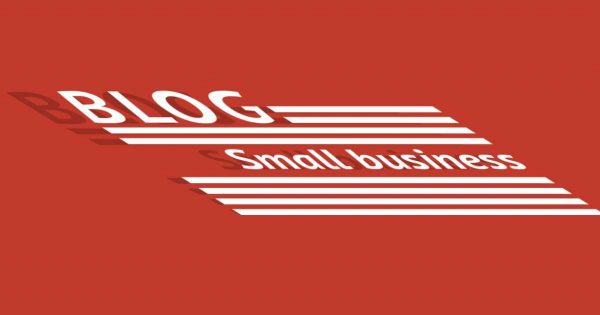Email is a major form of communication in today’s world, and our use of it seems to be ever expanding. Do you look at your inbox and despair at the number of emails in it? Have you ever missed, or lost, an email in amongst the cluttered mess that is your inbox? I have a solution for you! Read on, and see how I mastered my email inbox and boosted my daily productivity.
Inbox Zero
In 2006, a man by the name of Merlin Mann wrote a series of articles about changing one’s thinking, attitude, and practises towards email management that became known as “Inbox Zero”. His concepts have evolved over time, and today you can delve into the “Inbox Zero” way of life. There are tools, workflows, and lessons to be learned to fully embrace this approach to email, but today I want to share the simple workflow I use to keep email under control. Hats off to Merlin for his game changing ideas.
Email is a time suck, let’s fix it
Ever had one of those days where it felt like you were doing things all day, but at the end you felt like you’d accomplished little? Constantly checking and wrestling with your email will do that to you. Here are the 5 steps to implementing the process I use every day to keep my inbox, and mind, clear.
- Change your mindset towards email, and the type of communication it is
- Allocate set times to check email during the day
- Remove distractions
- Action, then archive, all emails (as much as possible) during those set times
- Form the habit
1. Changing your mindset
I found myself using, and reacting to, email the same way I would an instant message, or a phone call. However, the moment you realise it isn’t either of those things, suddenly you can make some decisions about how to manage and respond to emails. Email isn’t designed for a running “chat-like” conversation, and we shouldn’t treat it as such. Consider your industry and your customers and decide what an appropriate response time is (helpful hint: it’s not within the next 5 minutes).
2. Allocate set times to check your email
Email shouldn’t be a running action during the entire day; rather, it should be treated as a work task. For myself, I decided that dedicated email times would be set for first thing in the morning, just after lunch, and an hour before leaving for the day. I encourage you to set specific times, and also the amount of time you think it will take to action your emails (you’ll see why in step 5).
3. Removing distractions
Technology has done a great many things to keep us in the loop, and make communication easier. This also means that, for most of us, every time we get an email we are bombarded with a series of notifications telling us about it. Our smartphone will go “ding” and display a “new message” alert, a notification pop up will display on our laptop screen, and any other devices that can tell us about the arrival of this email certainly won’t miss an opportunity to do so.
Turn notifications off, we don’t need them anymore. We’ve decided when we will actively engage with our inbox, and we don’t want to be dragged into it by enticing alerts outside of those times.
4. Email time: Action and archive
So, it’s email time, how should we approach it? Action and archive. Email is a task now, remember? We’re going to focus on it, and complete it. When I open my inbox and view an email, here are the common actionable points I might have to complete.
- Reply to the email
- Action any steps related to this email (e.g. set calendar event)
- Download, sort and store attachments
The idea is to deal with the email, and any steps related to it, there and then. Only once I’m satisfied that I’ve completed that email will I archive it, making it vanish from my inbox. The key here is that it’s not about just reading the email. Does the email contain attachments for a project, or something you’re working on? If so, download and organise them now. Is the email confirming a meeting time? Great, open your calendar and schedule the event right now!
What if the email is about something you can’t do right now?
Remember how I said it was a good idea to decide how much time you would spend on email during each part of the day? This is why.
Let’s say an email is a request for a quote, and you’re the person who creates and supplies quotes. You’ve allotted yourself 15 minutes to concentrate on your email three times per day, and completing a quote will take longer.
Should you drop everything you’re doing and complete this right now so that you can archive this email? Of course not.
Decide when you’ll complete the quote, schedule it as a separate task, and reply to the email letting the customer know when they’ll receive their quote. Now, you can archive that email.
5. Forming the habit
It’s really easy to do this for a few days, but old habits can get in the way and muddle your plans. Like any new system, sticking to it is the tricky part. Here are some of the things I did to get into the habit.
- Set reminders for the three email points in each day, only checking email once I received a reminder.
- Turned off my email client outside of allocated email times.
- Kept my phone out of reach at my desk to stop the “check the phone” impulse.
- Informed my colleagues of my system so they didn’t ask me to action emails at random points during the day.
You’re there!
You’ve successfully implemented a simple workflow for managing emails and keeping your inbox clear. Now, by no means am I suggesting that this is THE way to accomplish email bliss, and you should feel free to experiment with it, and change it, to suit both your role and environment. Do what works for you, but do something.
So many benefits
It seems like such a simple thing,but I think many of us have resigned ourselves to the woes of email. That doesn’t have to be the case. I was genuinely surprised at both the productivity and psychological benefits that keeping my inbox as close to zero as possible has had. No more hunting for past emails, or sifting through clutter and wondering if I’d done everything I had to. I now know everything is actioned, all files are sorted, dates set, and further work tasks scheduled. It will make your day to day life much easier.
Implementing a system like this will also help you to identify, and hopefully change, other practices in your business that email is being used for, but really shouldn’t. For example, if a colleague emails you to request a file, asset, or action that they need right now, a system like this will help you to identify that this isn’t a good way to handle in-house, time sensitive, requests and new workflow should be created to handle this type of communication.
Are you going to try it out? Shoot us a comment on social media. I’d love to hear about your experience.



